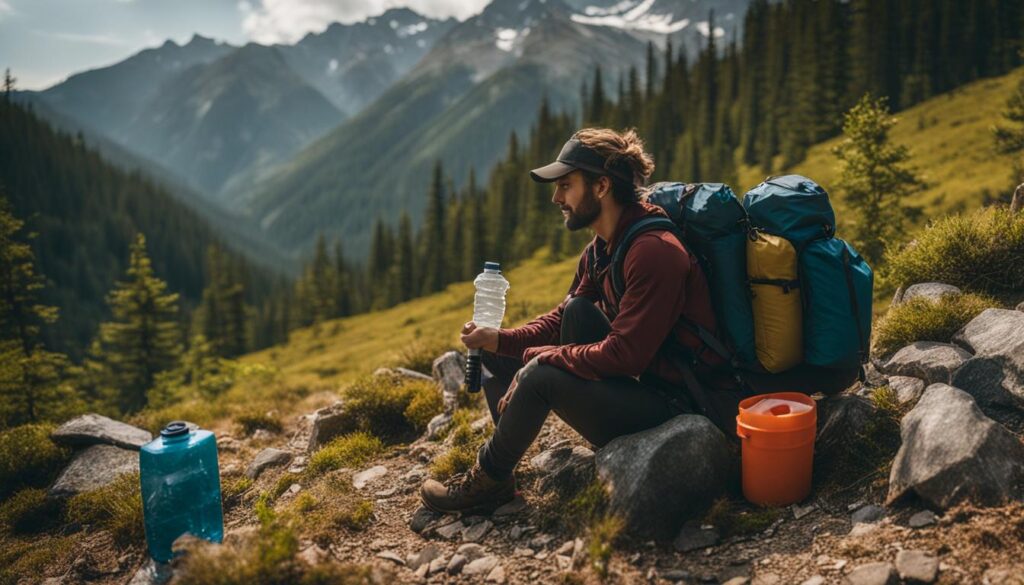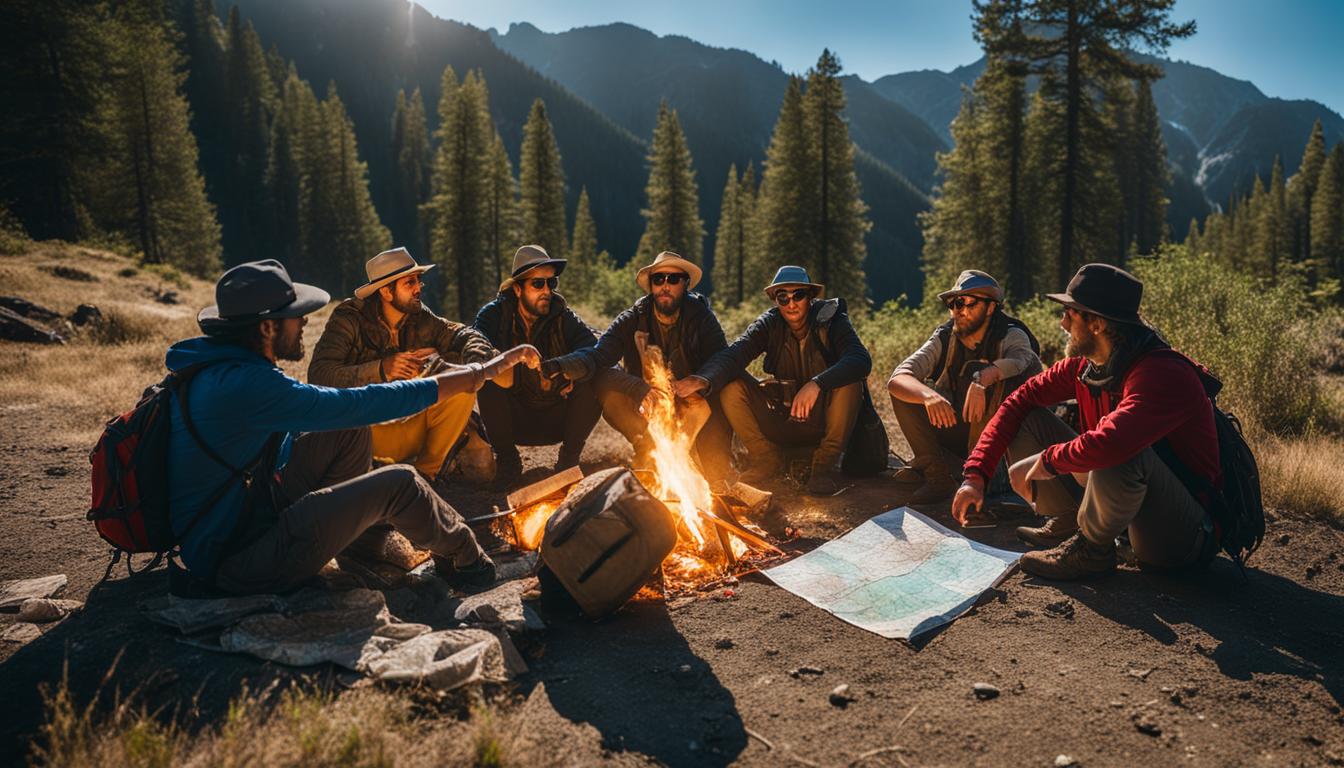As a passionate backpacker and outdoor enthusiast, I believe in the importance of preserving the natural beauty of wilderness areas. That’s why I’m dedicated to teaching Leave No Trace principles to beginner backpackers, ensuring that they have the knowledge and skills to minimize their impact on the environment while enjoying the great outdoors.
When it comes to beginner backpacking, education is key. By introducing beginners to the Leave No Trace (LNT) principles, we can inspire a sense of environmental stewardship and cultivate sustainable outdoor practices from the start. These principles are a set of guidelines designed to help backpackers minimize their impact on the environment, leaving the wilderness as pristine as they found it.
Key Takeaways:
- Teaching Leave No Trace principles is crucial for beginner backpackers
- By educating beginners, we inspire a sense of environmental stewardship
- Leave No Trace principles include planning, minimizing campfire impacts, and respecting wildlife
- Beginner backpackers can make a positive impact on the environment through responsible outdoor exploration
- Preserving wilderness areas for future generations is a shared responsibility
The Seven Principles of Leave No Trace Backpacking

The Leave No Trace program is built upon seven principles that provide guidance for enjoying the natural world in a sustainable way. By teaching these principles to beginner backpackers, we can ensure that they develop the necessary skills and mindset to minimize their impact on the environment. Let’s explore these principles:
1. Plan ahead and prepare
Before embarking on a backpacking trip, it’s important to gather information about the area, including any regulations and special concerns. Be aware of weather conditions and prepare for emergencies. Schedule trips during times of low use to avoid overcrowding, and repackage food to minimize waste. By planning ahead, you can ensure a safe and enjoyable experience while minimizing your impact on the environment.
2. Travel and camp on durable surfaces
One of the core principles of Leave No Trace is to avoid damaging fragile vegetation by staying on established trails and campsites. Use designated areas for camping and follow existing paths to minimize your impact. By staying on durable surfaces, you can protect the natural habitat and preserve the beauty of the wilderness for future generations.
3. Dispose of waste properly
Proper waste disposal is essential for preserving the environment. Pack out all trash and leave no trace of your visit. When nature calls, dig a cathole at least 200 feet away from water sources and deposit human waste properly. Wash dishes and yourself away from water sources to prevent contamination. By disposing of waste properly, you contribute to the cleanliness and sustainability of wilderness areas.
4. Leave what you find
Preserving the natural and cultural heritage of an area is crucial. Leave rocks, plants, and other natural objects where you find them, and respect cultural and historic structures. By leaving what you find, you allow others to experience the natural wonders untouched, fostering a sense of appreciation and wonder for all who visit.
5. Minimize campfire impacts
Campfires can have a lasting impact on the environment. To minimize their impact, use lightweight stoves instead of campfires whenever possible. Only have fires in designated areas and use existing fire rings to prevent the creation of new scars on the landscape. By minimizing campfire impacts, you help preserve the beauty and integrity of wilderness areas.
6. Respect wildlife
Wildlife is a vital part of the ecosystem, and it’s important to observe and appreciate from a distance. Do not feed animals, as it can disrupt their natural behavior and lead to dependency on human food. Store food securely to avoid attracting wildlife and prevent conflicts. By respecting wildlife, you contribute to the balance and harmony of the natural world.
7. Be considerate of other visitors
When backpacking, it’s important to be respectful and considerate of other visitors. Yield on trails to downhill hikers and give others the right of way. Minimize noise pollution and respect the solitude and tranquility of the wilderness. By being considerate of other visitors, you contribute to a positive and harmonious outdoor experience for everyone.
By teaching beginners these principles, we equip them with the knowledge and skills to make responsible choices while exploring the outdoors. Emphasizing Leave No Trace principles ensures that beginner backpackers develop a mindset of environmental stewardship and contribute to the preservation of our natural treasures.
Conclusion
Teaching Leave No Trace principles to beginner backpackers is essential for creating a culture of responsible outdoor exploration. As a beginner backpacking guide, I believe in promoting sustainable and eco-friendly backpacking tips to ensure the preservation of our wilderness areas.
By imparting knowledge about planning ahead, minimizing impact, and respecting the environment, we can equip beginner backpackers with the tools to make informed decisions and minimize their environmental footprint. Understanding the seven principles of Leave No Trace is crucial for beginner backpackers to develop responsible outdoor habits.
With proper education and guidance, beginner backpackers can become advocates for Leave No Trace principles and inspire others to follow in their footsteps. By adopting sustainable backpacking practices, we can protect the natural beauty of wilderness areas and ensure they are enjoyed by future generations.

